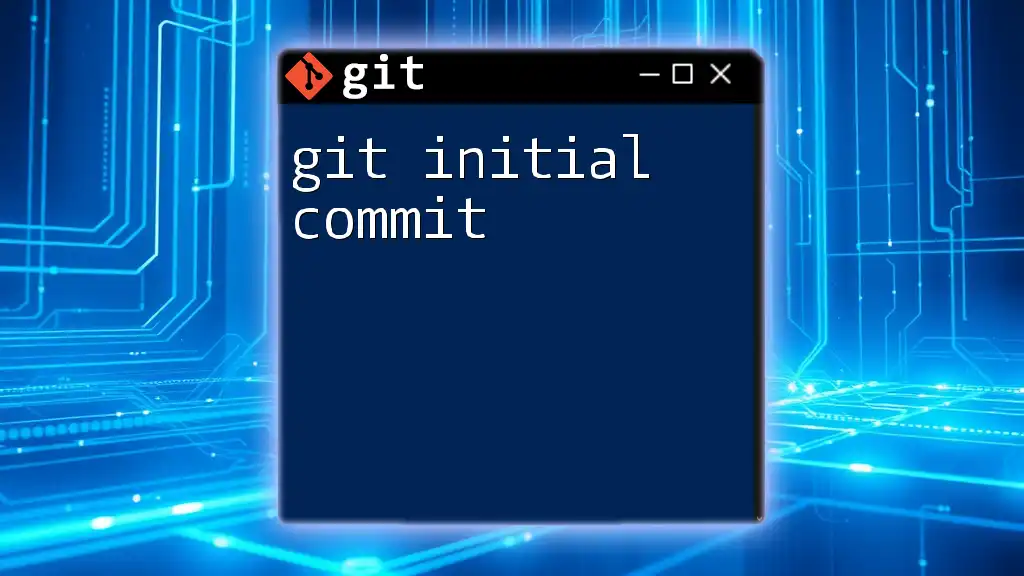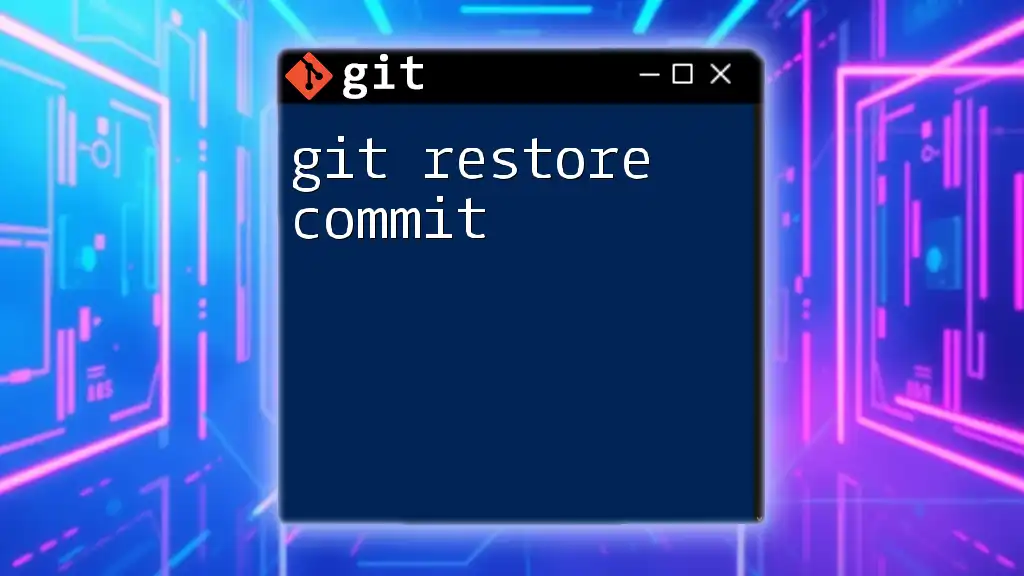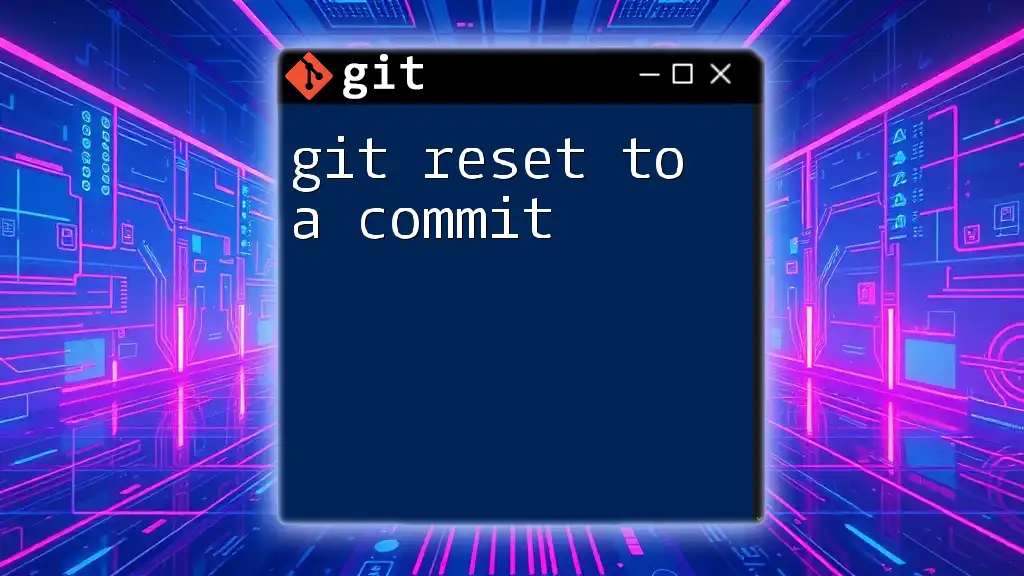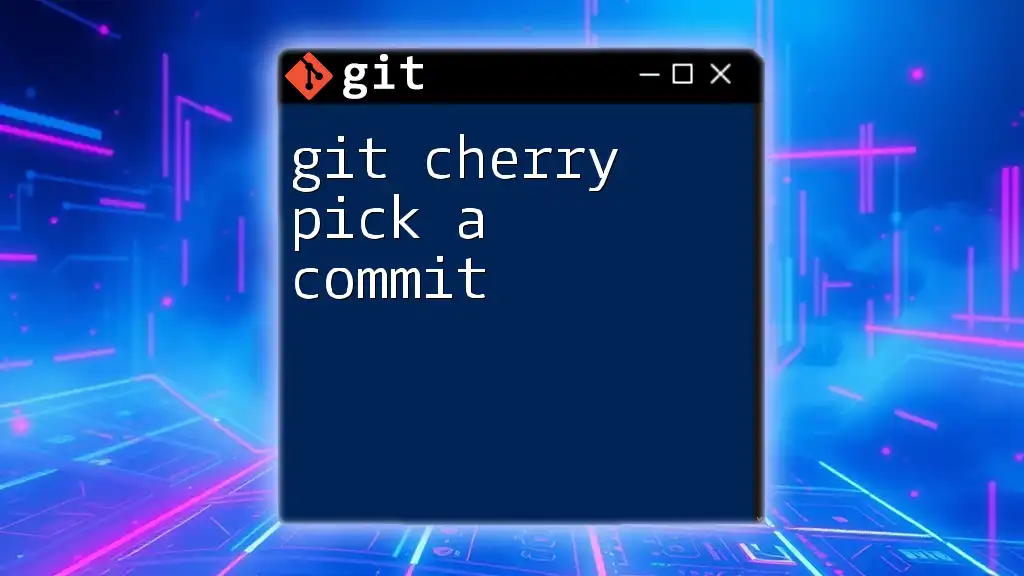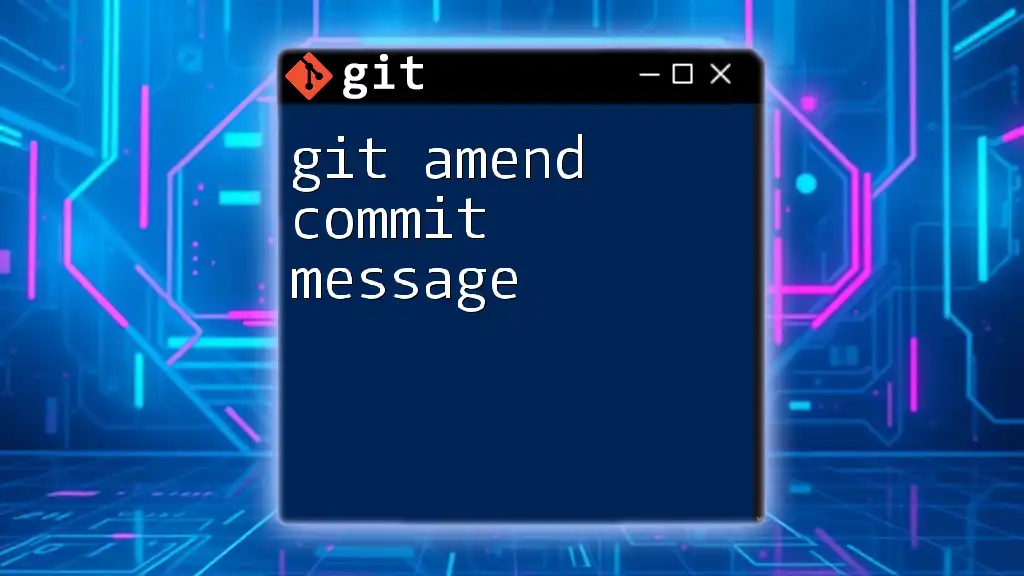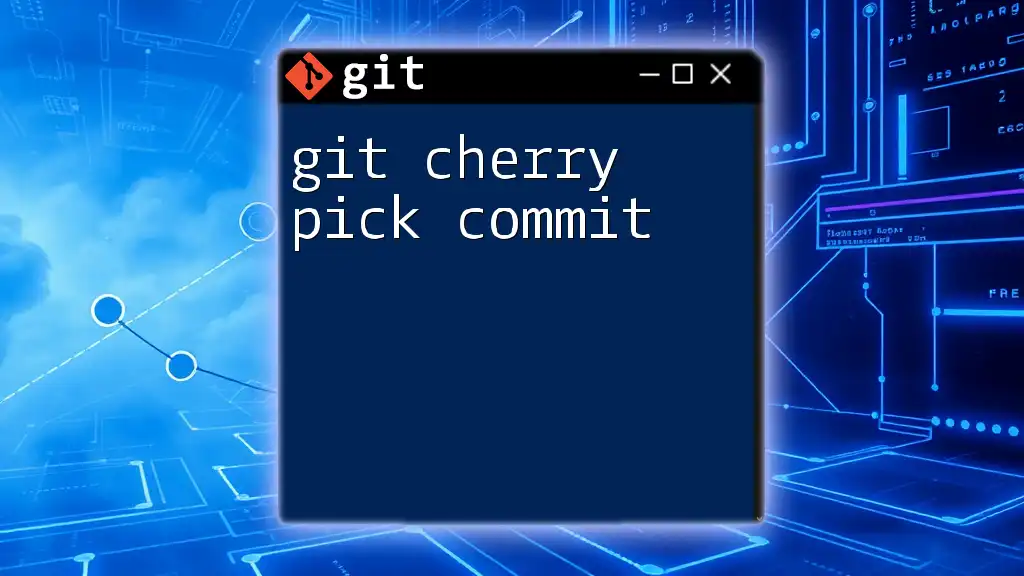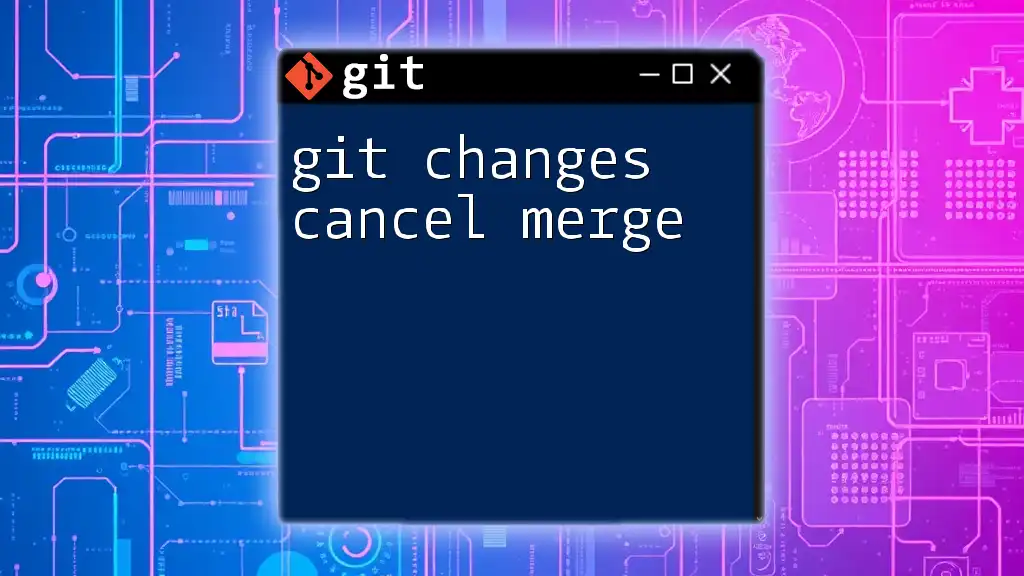In Git, you can view the changes made in a specific commit using the `git show` command followed by the commit hash to display the changes alongside the metadata of that commit.
Here's how you can do it:
git show <commit-hash>
Understanding Commits in Git
What is a Commit?
A commit in Git represents a snapshot of your project at a particular point in time. Every time you make changes to your files and want to save those changes in your repository, you create a commit. It acts as a save point in your project's history. Understanding how to work with commits is crucial for effective version control and project management.
For example, a basic commit might look like this:
git commit -m "Initial commit: Set up project structure"
Anatomy of a Commit
Each commit in Git contains several key elements that provide essential information:
- Commit Hash: A unique identifier for each commit, generated as a SHA hash. It ensures that every commit can be referenced distinctly.
- Author Information: This specifies who made the changes and is displayed alongside the commit.
- Commit Message: A brief description of the changes made, essential for maintaining clarity in the project’s history.
- Timestamp: Shows when the commit was created, helping to track the project's evolution over time.
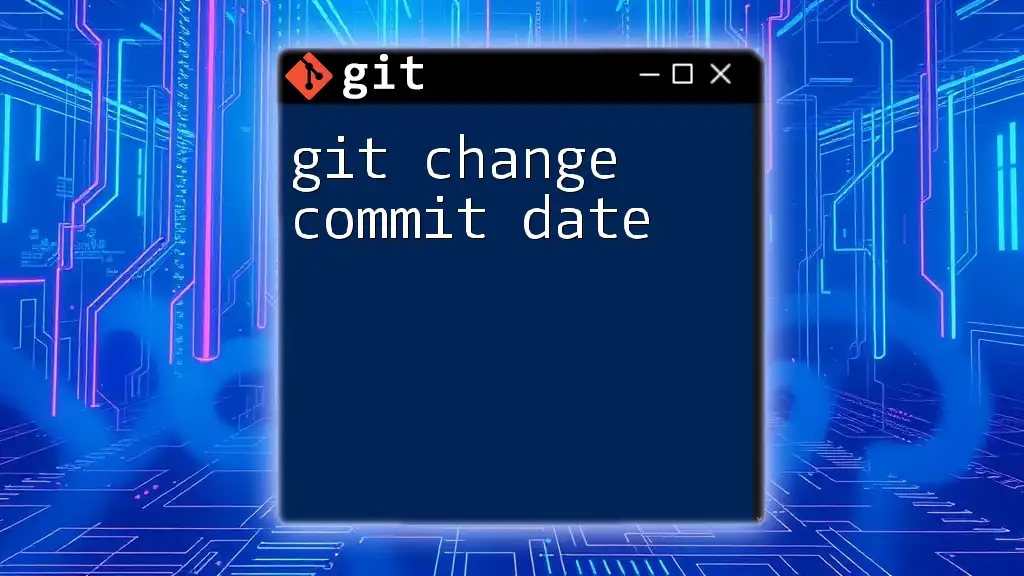
Tracking Changes in Git
Overview of Change Monitoring
Tracking changes is fundamental in version control systems like Git. This monitoring allows you to see what modifications have been made, which is vital for collaboration and maintaining a coherent project history. Git records changes through a staging area before they are committed.
Staging Changes
Before you commit changes, you must stage them. The working directory is where you make changes, while the staging area holds changes that are ready to be committed.
You can stage changes using the `git add` command. For instance, if you want to stage a file named `index.html`, you’d execute:
git add index.html
This command prepares the file for the next commit.
Examining Changes Before Committing
Before making a commit, it’s crucial to review what changes you’ve staged. You can do this with the `git status` command.
Running `git status` will show which changes are staged for commit and which files are untracked or modified, allowing you to verify your commit's content.
Furthermore, you can compare changes in your working directory against the staging area using the `git diff` command. This helps you review what you are about to commit. For example:
git diff
This command displays the differences between your modified files and the staged files, providing a clear view of what will be included in the commit.
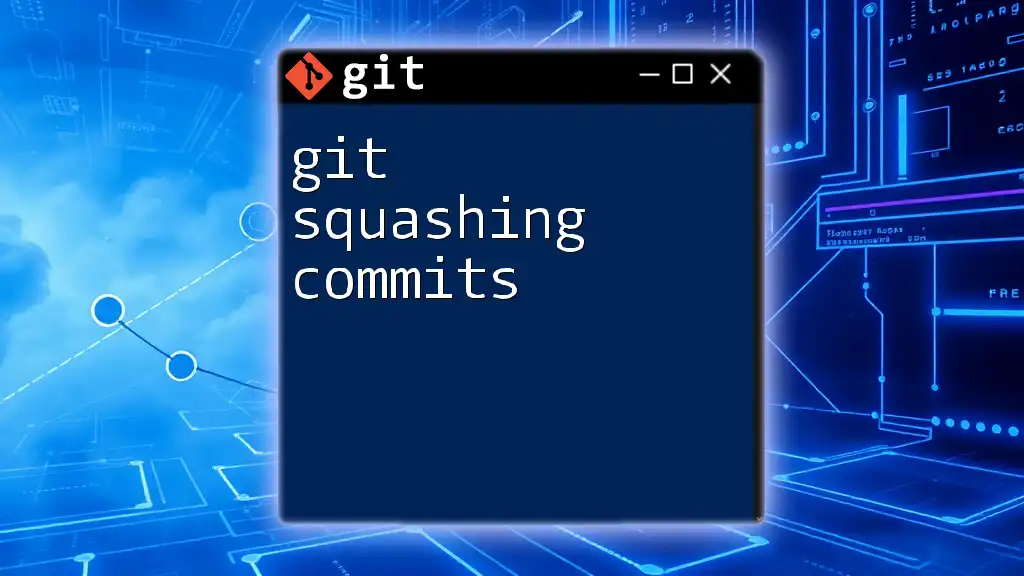
Making a Commit
Creating a Commit
To save your staged changes, utilize the `git commit` command. The following example showcases the basic syntax for committing changes:
git commit -m "Add new feature: user authentication"
The `-m` flag allows you to include a commit message, summarizing what changes were made.
Writing Effective Commit Messages
Writing effective commit messages is imperative for project documentation. A well-crafted commit message provides context for other contributors and your future self. Here are some best practices:
- Use imperative mood: Write as if you’re giving commands. For instance, use “Add” instead of “Added.”
- Be concise but clear: Provide enough detail to understand the changes without excessive wording.
- Reference issues or tasks: If applicable, mention related issues or tasks to maintain a clear connection between commits and project management.
Amend Last Commit
If you need to change the last commit (for example, to modify the commit message or include additional changes), you can use the `git commit --amend` command. This command opens an opportunity to adjust the last commit without creating a new one, which can help keep your commit history clean.
Here’s how to amend the last commit’s message:
git commit --amend -m "Refine user authentication feature"

Viewing Changes in a Commit
Using `git show`
You can view the changes made in a specific commit using the `git show` command. This command displays the commit’s content along with the changes that were introduced. For instance:
git show <commit-hash>
By replacing `<commit-hash>` with the actual hash of the commit you want to examine, you’ll see detailed information, including the commit message, author, date, and a unified diff showing what was added or removed.
Reviewing Commit History
To review the history of all the commits made in a repository, you can use the `git log` command. This command lists all commits in reverse chronological order. You can customize its output for clarity:
git log --oneline --graph
This example would give you a simplified view of your commit history in the form of a concise graph.

Best Practices for Managing Commits
Frequent and Meaningful Commits
One of the best practices in version control is to commit frequently and ensure that each commit is meaningful. Committing often prevents long, complicated commits which can be hard to review and understand. Small, incremental commits also make it easier to troubleshoot issues that may arise.
Branching and Merging
Using branches for feature development is an important practice in Git. It allows you to work on new features or fixes in isolation without affecting the main codebase. Once you’ve completed your changes, you can merge your branch back into the main branch using `git merge`.
Maintaining clean merge commits is essential for a tidy project history. It’s generally easier to understand the evolution of a project when the commit history is logical and organized.
Keeping a Clean History
To preserve a clean commit history, consider squashing commits when merging feature branches. This combines multiple commits into a single one, simplifying your history. Use the `git rebase -i` command for interactive rebasing. Here’s an example of how to squash commits:
git rebase -i HEAD~n
Replacing `n` with the number of commits you want to squash will open an editor where you can choose which commits to combine.
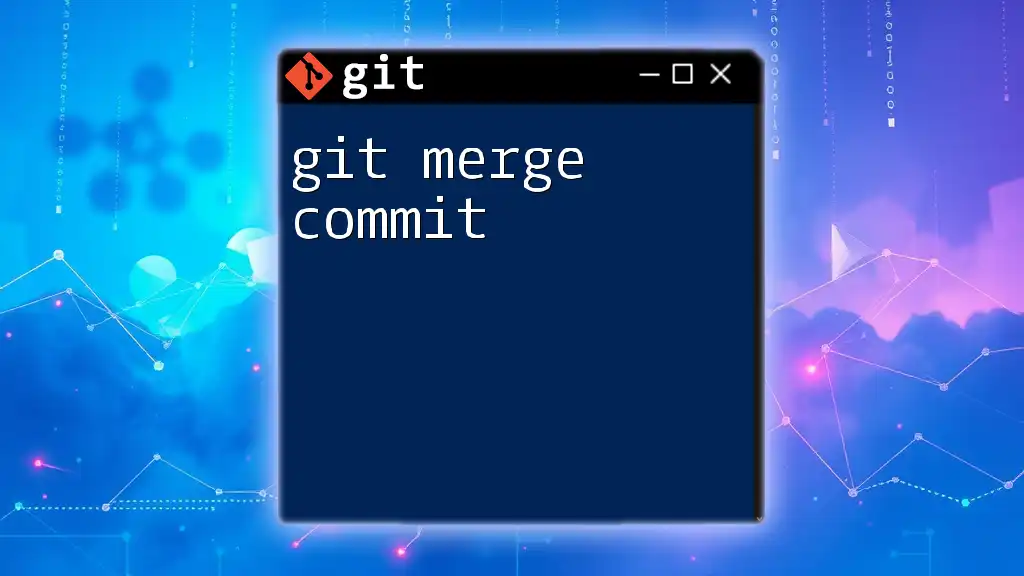
Conclusion
Understanding git changes in a commit is vital for effective project management and collaboration. By mastering the art of committing, writing meaningful messages, and maintaining a clean project history, you'll ensure that your development process is smooth and efficient. Practicing these commands and techniques will enhance your skills and contribute positively to your projects. Make sure to apply these principles and embrace the power of Git in your workflow!







